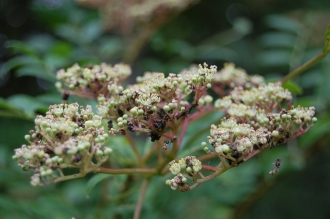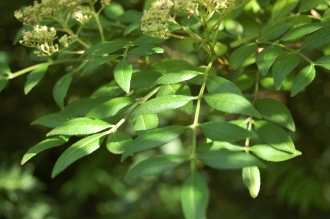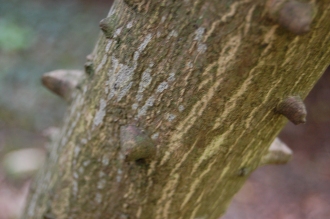Position: Full sun to light shade
Flowering period: Late spring
Soil: Moist, well drained
Eventual Height: 15m
Eventual Spread: 12m
Hardiness: 8b, 9a, 9b, 10a, 10b, 11
Family: Rutaceae
Zanthoxylum ailanthoides is a deciduous tree with a spreading habit. Its mid green leaves are odd pinnate and fragrant when touched. Its leaflets are lanceolate with entire margins, up to 18cm long, 6cm broad, and turn yellow in autumn before they fall. Its branches have thorns. Its yellow/ white dioecious flowers are up to 3mm across and appear as terminal axillary clusters. Its pale red/ brown fruit are small aromatic berries and appear in autumn.
Zanthoxylum ailanthoides, commonly known as Ailanthus Leaved Pepper, Japanese Prickly Ash or Crow Prickly Ash, is native Japan, Taiwan and southeast Asia. In its native habitat it grows in forest and thickets.
The etymological root of the binomial name Zanthoxylum is derived from the Greek zanthos meaning ‘yellow’ and xylon meaning ‘wood’. Ailanthoides is derived from the Latin meaning ‘like an Ailanthus’, in reference to its leaves.
The landscape architect may find Zanthoxylum ailanthoides useful as an attractive small specimen tree.
Ecologically, Zanthoxylum ailanthoides flowers are attractive to some pollinating insects.
Zanthoxylum ailanthoides prefers moist, fertile, well-drained soils. It tolerates most pH of soil.
Zanthoxylum ailanthoides requires little maintenance.











